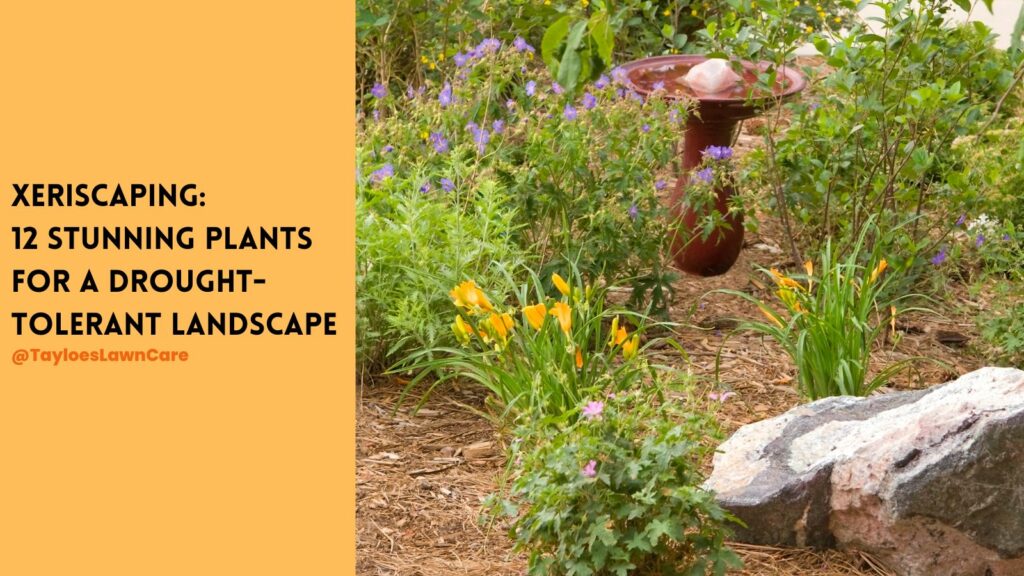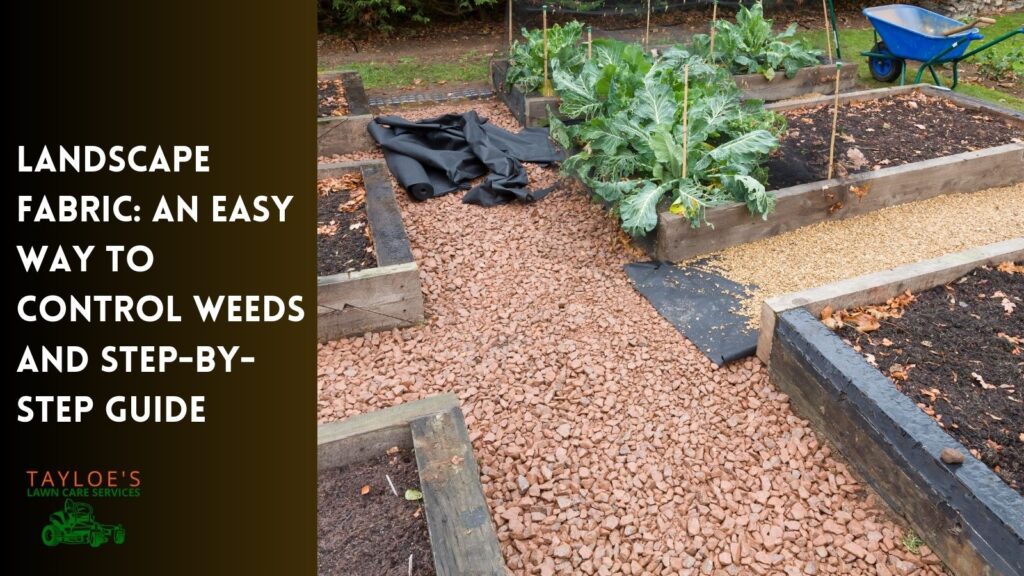Last Updated on: 6th December 2024, 10:46 am
Mulching is a must for multiple reasons. Learn why and which to choose.
Garden mulch is a natural way to improve the health of your plants and soil. Mulching is placing a layer of organic matter over the soil surface to help retain moisture, regulate temperature, and suppress weed growth. Many different types of mulch are available on the market, but choosing the best mulch for your vegetable garden or landscape can be daunting.
When it comes to vegetable gardening, choosing the right mulch is essential. The best mulch for a vegetable garden will help retain moisture, regulate temperature, and suppress weed growth without introducing harmful chemicals into the soil. Organic mulches, such as straw, leaves, and grass clippings, are excellent choices for vegetable gardens because they are readily available, affordable, and beneficial for the soil.
Mulching is also critical to achieving the best outcomes in decorative landscaping. Whether you are looking to create a new garden bed or maintain an existing one, adding mulch can be a great way to improve the health and appearance of your landscape. The right mulch can help to retain moisture, regulate temperature, suppress weed growth, and provide an attractive backdrop for your plants. With so many different mulch types available, choosing the one that best suits your needs and preferences is essential.
What Is Garden Mulch?
Mulch is a layer of material, usually organic but sometimes inorganic, placed over the soil surface to provide various benefits to plants and soil. Organic mulches, such as shredded leaves, straw, or bark, can be decomposed by soil microorganisms and provide additional nutrients to the soil.
On the other hand, inorganic mulches, such as pebbles or plastic sheeting, do not break down and are used primarily for weed suppression and moisture retention.
Mulching can help to regulate soil temperature, reduce water loss due to evaporation, suppress weed growth, and prevent soil erosion. In addition, organic mulches can improve soil fertility by adding nutrients as they decompose. They can also help reduce soil compaction by increasing soil structure and promoting a healthy soil ecosystem. Mulching is common in backyard gardening and applied in urban gardens and landscaping. It is generally helpful in various settings to promote healthy plant growth and soil health.
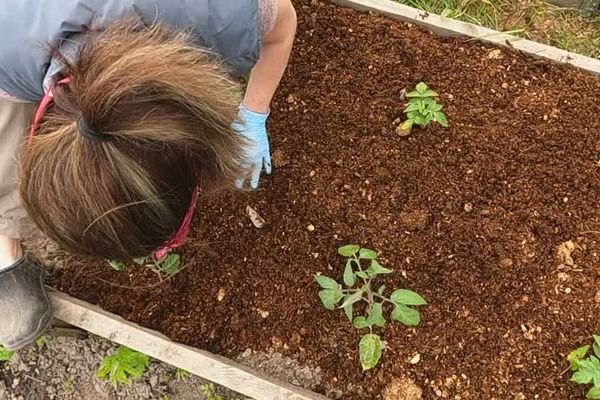
Pros and Cons of Installing Garden Mulch in Your Beds
Garden mulch is a popular method for improving soil health and plant growth but has some drawbacks. Here are the pros and cons of using garden mulch:
Pros:
- Retains moisture in the soil, reducing the need for frequent watering.
- Regulates soil temperature, protecting plants from extreme heat or cold.
- Suppresses weed growth, reducing the need for herbicides.
- Adds organic matter to the soil as it decomposes, improving soil fertility.
- Reduces soil erosion and compaction, promoting healthy soil structure.
- Provides an attractive finish to garden beds and landscaped areas.
Cons:
- It can create a moist environment that encourages fungal diseases in plants.
- It may attract rodents and other pests seeking shelter in the mulch.
- Certain types of mulch can introduce weed seeds or other contaminants to the soil.
- Too much mulch can create an oxygen-poor environment that damages plant roots.
- Inorganic mulches like plastic do not decompose and can create waste.
Dos and Donts When You Apply Garden Mulch
Here are a few general guidelines, we will dive deeper into how to apply it in the subsequent section.
Mulching Dos:
- Use a layer of mulch two or three inches thick to maximize benefits without suffocating the plants.
- Do choose the right type of mulch for your plants and soil. Consider factors such as pH, moisture level, and nutrient content. For example, if you want to plant acid-loving blueberries, consider peat moss over a more alkaline type.
- Do leave a gap between the mulch and the stem or trunk of plants to prevent rot and pest infestations.
- Do refresh your mulch layer regularly to maintain its benefits and aesthetic appearance.
- Consider using organic mulch, as it can improve soil health.
Mulching Don’ts:
- Don’t use too much mulch, which can prevent oxygen from reaching the soil and cause root damage.
- Don’t place mulch too close to the stems or trunks of plants. Unfortunately, this placement can create a moist environment that encourages disease and pest problems.
- Don’t use mulch contaminated with weed seeds. That’s because the seeds can create more problems than it solves.
- Don’t use certain types of inorganic mulch, such as plastic or rubber. They may prevent water and air from reaching the soil.
- Don’t forget to remove any old or moldy mulch before adding a new layer.
- Don’t create a “mulch volcano” as you apply the material. We dedicate the following section to this common mistake.
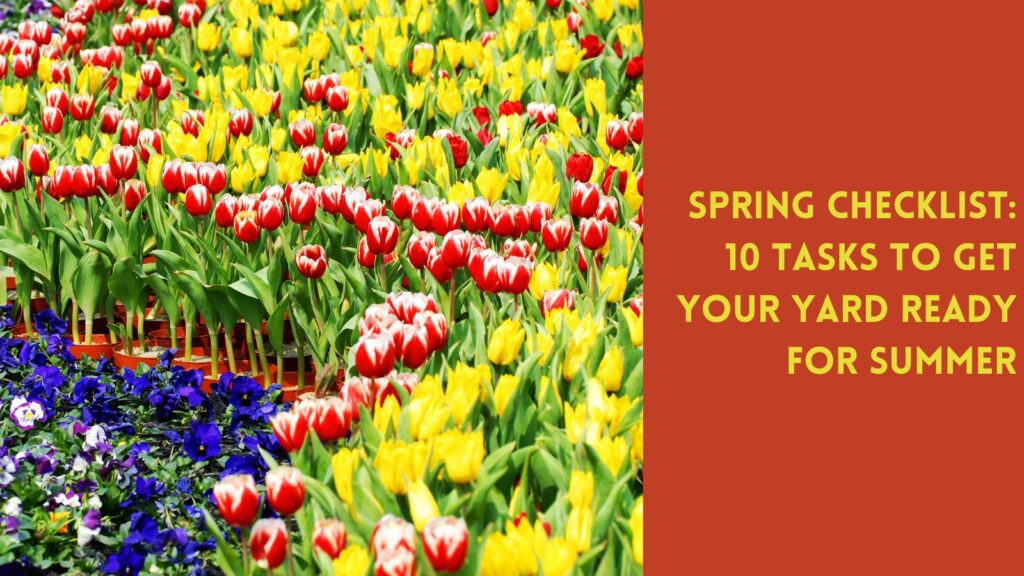
How to Apply Without Creating a Mulch Volcano
Here’s how to apply mulch around different types of plants properly and how to avoid creating a mulch volcano:
Around trees and shrubs:
- Clear the area around the tree or shrub of any debris or weeds.
- Spread a layer of organic materials about two inches thick in a circle around the base of the plant. The mulch should extend out to the drip line of the tree or shrub, but you should not pile it up against the trunk.
- Leave a gap between the mulch and the trunk to prevent rot and pest infestations.
Around vegetables and herbs:
- Apply a thin layer of mulch, no more than 1 inch thick, around the base of each plant.
- Leave space around the plant stem to prevent rot and disease.
- Refresh the mulch layer every few months, as needed.
To avoid a mulch volcano, which is when mulch is piled up high against the trunk of a tree, follow these tips:
- Do not pile mulch up against the trunk or stem of a plant.
- Keep the mulch layer thin, especially around young trees and shrubs.
- Spread the mulch layer evenly, and do not create a mound or cone shape.
- Make sure to leave a gap of several inches between the mulch layer and the base of the plant.
Creating a mulch volcano can lead to several problems, including these:
- Excess moisture and humidity can promote rot and disease in the trunk or stem.
- Pests and rodents can hide in the moist, warm environment created by the mulch.
- Oxygen deprivation can damage or kill the roots of the plant.
Fifteen Types of Organic and Inorganic Garden Mulch
We will categorize these mulching materials by organic or inorganic.
It’s important to note that in this context, organic merely means it comes from living (or once alive) materials. It does not indicate that it’s free of chemicals, additives, or dyes (unless the retailer explicitly marks it as such).
Organic Garden Mulch:
Organic mulches such as pine straw, hay, arborist chips, wood chips, and the others listed can promote healthy soil and plant growth. However, it’s essential to choose the right type of mulch and use it correctly for your specific application to maximize its benefits and avoid any potential drawbacks.
1. Pine straw:
Pine straw is a popular organic mulch made from the needles of pine trees. It has some specific benefits and drawbacks, and is best used in certain applications.
Where to use:
- In acidic soil, as it can help maintain the soil’s pH level.
- In areas with heavy rainfall or strong winds, as it can form a dense mat that helps prevent erosion and keep the soil in place.
- In areas with a lot of foot traffic, as it can provide a non-slip surface.
Where not to use:
- In areas with alkaline soil, as it can further increase the pH level.
- In areas where the needles may be difficult to clean up, such as around pools or outdoor seating areas.
- In areas where weed growth is a concern, as it does not provide strong weed suppression.
2. Hay:
Hay is a type of organic mulch made from dried grasses or legumes. It can be a good choice for certain applications, but has some limitations.
Where to use:
- In areas where soil fertility is a concern, as it can break down and add nutrients to the soil.
- In areas with high winds or heavy rainfall, as it can help keep the soil in place.
- In areas with a lot of foot traffic, as it can provide a non-slip surface.
Where not to use:
- In areas where the hay may contain weed seeds or other contaminants, as it can introduce these to the soil.
- In areas where it may be difficult to clean up, such as around pools or outdoor seating areas.
- In areas where fungal growth is a concern, as it can create a moist environment that encourages fungal diseases in plants.
3. Wood chips:
Wood chips are a popular type of organic mulch made from shredded wood. They have specific benefits and drawbacks and are best used in certain applications.
Where to use:
- In areas where soil fertility is a concern, it can break down and add nutrients to the soil.
- In areas with high winds or heavy rainfall, it can help keep the soil in place.
- It can suppress weeds in areas where weed growth is a concern.
Where not to use:
- In areas where fungal growth is a concern, it can create a moist environment that encourages fungal diseases in plants.
- In areas where the wood chips may contain toxic chemicals or other contaminants, such as those from pressure-treated wood.
- In areas with a lot of foot traffic, it can provide a less stable surface than other types of mulch.
4. Newspaper:
Newspaper can be a useful type of organic mulch in certain situations. It is typically used as an underlayer for other types of mulch.
Where to use:
- In areas where weed growth is a concern, as it can provide a strong barrier to prevent weeds from growing.
- In areas where the soil needs to be moistened or maintained, as it can help retain moisture in the soil.
- In areas where the newspaper is covered with another type of mulch, such as wood chips or straw.
Where not to use:
- In areas where the newspaper may not be covered with another type of mulch, as it can be unattractive and may blow away in the wind.
- In areas where the newspaper may contain ink or other chemicals, as it can be harmful to plants.
It’s worth noting that newspapers do contain some synthetic components, added in the paper manufacturing process. Federal authorities acknowledge this but still allow it on the “organic” list.
5. Wood shavings:
Wood shavings can be a useful type of organic mulch in certain situations. They are typically made from softwoods and can break down over time.
Where to use:
- In areas where soil fertility is a concern, as it can break down and add nutrients to the soil.
- In areas with high winds or heavy rainfall, as it can help keep the soil in place.
- In areas where weed growth is a concern, as it can provide strong weed suppression.
Where not to use:
- In areas where fungal growth is a concern, as it can create a moist environment that encourages fungal diseases in plants.
- In areas where the wood shavings may contain toxic chemicals or other contaminants, such as those from pressure-treated wood.
- In areas with a lot of foot traffic, as it can provide a less stable surface than other types of mulch.
6. Arborist chips:
Arborist chips are organic mulch made from shredded wood and branches. They are typically a byproduct of tree trimming and removal.
Where to use:
- In areas where soil fertility is a concern, it can break down and add nutrients to the soil.
- In areas with high winds or heavy rainfall. This helps it keep the soil in place.
- It can provide strong weed suppression in areas where weed growth is a concern.
Where not to use:
- In areas where fungal growth is a concern, it can create a moist environment that encourages fungal diseases in plants.
- In areas where the chips may contain toxic chemicals or other contaminants, such as those from diseased or treated trees.
- In areas where the chips may attract pests, such as termites or ants.
7. Shredded Leaves:
Shredded leaves are a popular type of organic mulch to apply in various settings. They are typically lightweight and can break down quickly over time.
Where to use:
- In areas where soil fertility is a concern, it can break down and add nutrients to the soil.
- In areas with high winds or heavy rainfall, because it can help keep the soil in place.
- In areas where weed growth is a concern, were it can suppress weeds.
- Vegetable gardens, where it can provide a nutrient-rich environment for plants to grow.
Where not to use:
- In areas with a lot of foot traffic; it can provide a less stable surface than other types of mulch.
- In areas where fungal growth is a concern, as it can create a moist environment that encourages fungal diseases in plants.
8. Shredded Bark:
Shredded bark is a popular type of organic mulch that is typically made from the bark of trees. It is a heavier type of mulch that can take longer to break down than shredded leaves.
Where to use:
- In areas where soil fertility is a concern, as it can break down and add nutrients to the soil.
- In areas with high winds or heavy rainfall, as it can help keep the soil in place.
- In areas where weed growth is a concern, as it can provide strong weed suppression.
- In landscaping, as it can provide an attractive, natural-looking surface.
Where not to use:
- In areas where fungal growth is a concern, as it can create a moist environment that encourages fungal diseases in plants.
- In vegetable gardens, as it can be too heavy and can make it difficult for plants to grow.
9. Cardboard:
Cardboard is a type of organic mulch that can be useful in certain situations. It is typically used as an underlayer for other types of mulch.
Where to use:
- In areas where weed growth is a concern, as it can provide a strong barrier to prevent weeds from growing.
- In areas where the soil needs to be moistened or maintained, as it can help retain moisture in the soil.
- In areas where the cardboard is covered with another type of mulch, such as wood chips or straw.
Where not to use:
- In areas where the cardboard may not be covered with another type of mulch, as it can be unattractive and may blow away in the wind.
- In areas where the cardboard may contain ink or other chemicals, as it can be harmful to plants.
10. Garden Compost:
Garden compost is an organic mulch made from decomposed plant and animal materials. It is a nutrient-rich type of mulch that can provide many benefits for soil and plant health.
Where to use:
- In vegetable gardens where it can provide a nutrient-rich environment for growing plants.
- In areas where soil fertility is a concern. It can add valuable nutrients to the soil.
- In landscaping, beacuse it can provide an attractive, natural-looking surface.
Where not to use:
- In areas where the compost is not fully decomposed, as it can attract pests and insects.
- In areas where fungal growth is a concern; it can create a moist environment that encourages fungal diseases in plants.
11. Grass Clippings:
Grass clippings are an organic mulch that is free. Just rake it from your lawn. This material makes a lightweight mulch that can break down quickly over time.
Where to use:
- In areas where soil fertility is a concern; it can break down and add valuable nutrients to the soil.
- In areas with high winds or heavy rainfall. It can help keep the soil in place.
- In vegetable gardens; it can provide a nutrient-rich environment for plants to grow.
Where not to use:
- In areas where the grass has been treated with herbicides or pesticides, because it can contain harmful chemicals that can harm plants.
- In areas where the grass has gone to seed, as it can create an environment that encourages weed growth.
12. Cocoa Hull:
Cocoa hull is an organic mulch made from the shells of cocoa beans. It is an attractive, dark-colored material that can provide a sweet smell to your garden.
Where to use:
- In landscaping, where it can provide an attractive, natural-looking surface.
- In areas where the soil needs to be moistened or maintained, as it can help retain moisture in the soil.
Where not to use:
- In areas where pets or wildlife may be present, because it can be harmful if they eat it.
- In areas with high winds or heavy rainfall; it can be easily blow or wash away.
Inorganic Garden Mulch:
In general, inorganic mulches such as pea gravel, rubber, and plastic can be helpful in some applications but are unsuitable for use around plants or in garden beds where organic mulch is preferred. It’s essential to consider the specific needs of your landscaping or agricultural application and choose the right type of mulch accordingly.
13. Pea gravel:
Pea gravel is a small, rounded stone that can be used as an inorganic mulch. It is a good choice for some applications but not for others. Here are some guidelines:
Where to use:
- It can provide a stable, non-slip surface in paths or walkways.
- In areas where drainage is a concern, the gaps between the stones allow water to pass through.
Where not to use:
- In garden beds or around plants, as it does not provide any nutrients to the soil and can make it difficult for plant roots to grow.
- In areas where weeds are a concern, as it does not provide any weed suppression.
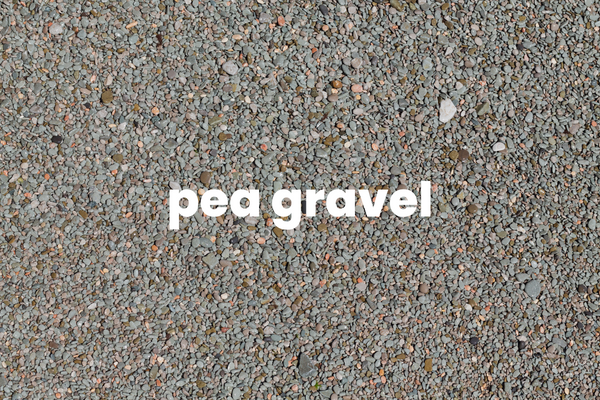
14. Rubber mulch:
Rubber mulch is made from recycled tires and is a popular inorganic mulch. However, it also has some drawbacks. Here’s where to use and where not to use it:
Where to use:
- In areas where safety is a concern, such as under playground equipment or on sports fields, as it provides a soft landing surface.
- In landscaping applications, as it can provide an attractive, long-lasting finish.
Where not to use:
- In garden beds or around plants, as it does not provide any nutrients to the soil and can make it difficult for plant roots to grow.
- In areas where it will be exposed to direct sunlight for long periods, as it can become hot and release volatile organic compounds (VOCs).
15. Plastic mulch:
Plastic mulch is a popular inorganic mulch for agricultural applications but has some drawbacks. Here’s where to use and where not to use it:
Where to use:
- In commercial agriculture, where it can provide weed suppression and reduce water use.
- It can help regulate soil temperature and moisture in areas with poor soil quality.
Where not to use:
- In garden beds or around plants, as it does not provide any nutrients to the soil and can make it difficult for plant roots to grow.
- In areas where it will be exposed to direct sunlight for long periods, as it can break down and release toxins into the soil.
- In areas where drainage is a concern, as it can prevent water from reaching the soil.
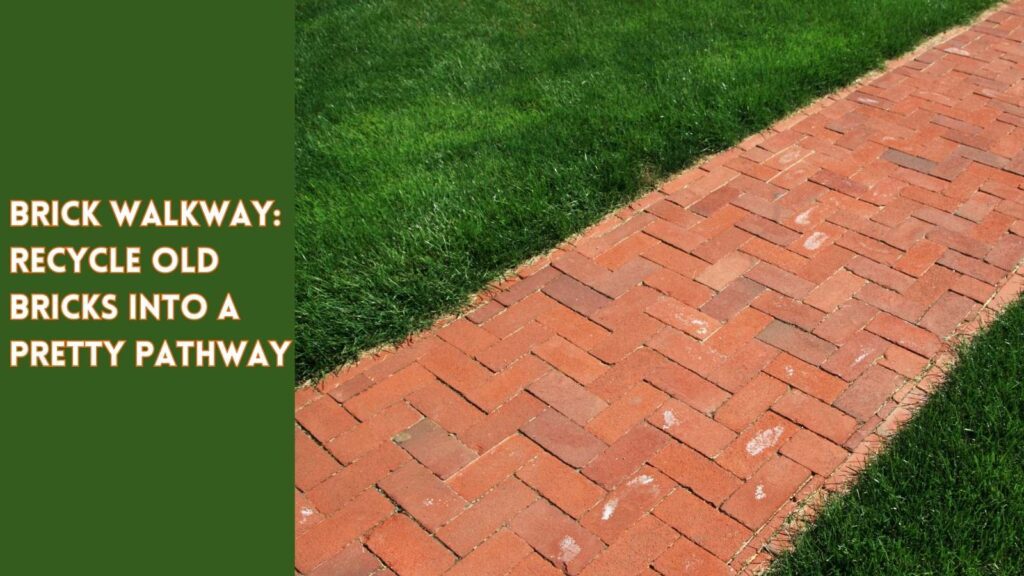
The Takeaway: Choosing the Right Garden Mulch to Suit Your Needs Will Determine Your Ultimate Success
Choosing the right mulch is important when promoting healthy plant growth and maintaining the overall aesthetic of your garden or landscape. Mulch serves many important functions, including reducing soil erosion, retaining moisture, suppressing weed growth, and regulating soil temperature. By choosing the right type of mulch for your specific needs, you can help ensure that your plants thrive and your garden or landscape looks its best.
Mulching your plants and landscaping features can also help prevent diseases in plants, as it helps to create an environment that is less favorable for pathogens and pests to thrive. Additionally, using the right type of mulch can help promote the growth of beneficial microorganisms in the soil, improving soil fertility and plant health. When used properly, garden mulch can be a valuable tool in maintaining healthy, beautiful plants and landscapes, making it an important consideration for any gardener or landscaper.
If you enjoyed this post on garden mulch, we encourage you to follow Tayloe’s Lawn Care Services on Facebook for even more landscaping and gardening information.
Author Profile

- Deborah Tayloe is the CEO and co-founder of Tayloe's Lawn Care Services, LLC. She has a B.S.Ed and holds certificates in soil and water management and herbology from accredited programs.
Latest entries
 Trees and ShrubsApril 22, 2025Boxwood Blight: Early identification and isolation
Trees and ShrubsApril 22, 2025Boxwood Blight: Early identification and isolation Flower GardenApril 8, 2025John F. Kennedy Rose: Hybrid tea rose with elegant white blooms
Flower GardenApril 8, 2025John F. Kennedy Rose: Hybrid tea rose with elegant white blooms Vegetable GardenMarch 24, 2025Trellis vegetables provide an abundant vertical garden harvest
Vegetable GardenMarch 24, 2025Trellis vegetables provide an abundant vertical garden harvest GardeningMarch 17, 2025Are coffee grounds good for compost?
GardeningMarch 17, 2025Are coffee grounds good for compost?





